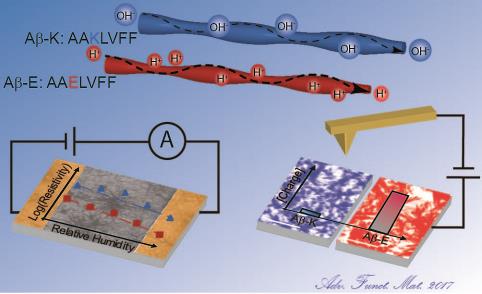
Prof. Nurit Ashkenasy - Research Group
Bio-Electronics and Bio-Sensors

Peptide templates for the formation of inorganic electronic devices
Single crystals, patterned at the micro- and nano-meter scale, are important components in various electronic, sensory, and optical devices. Inspired by biomineralization processes, we study the possibility to use peptides for the alignment of inorganic materials in functional device configurations, and, at the same time, for modulating their electronic properties. To this aim we use peptide sequences that were recently identified using biological libraries to specifically interact with corresponding inorganic compounds. Thus, we have designed peptides with affinities to two different inorganic materials and utilized them as single-layer linkers for the deposition and patterning of corresponding nanoparticles. Attachment and spatial organization of the nano-crystals on solid support was accomplished by patterning the peptides using soft lithography techniques. The great feasibility of the developed patterning processes for use in microelectronic and nanoelectronic applications was demonstrated by the choice of two technologically important nanoparticle systems: carbon nanotubes (CNTs) and gold colloids, which were deposited on silica surfaces. The flexibility of this methodology has allowed the formation of novel multi-nanoparticles patterns of both the CNTs and gold colloids on the same substrate. Details of this techniques are presented in a paper in Nanotechnology.



We have further utilized these dual affinity peptide binders for the growth of continuous gold films on a silica substrate. In a publication in J. Mat. Chem. we have shown that the resulting films are comprised of disk shaped crystalline gold nanoparticles, and analyzed the gold-peptide interactions, demonstrating the role of charge transfer processes. Moreover, the ability to define patterns of the peptide on the surface has been utilized for defining gold film patterns on the surface.

We are currently involved in a very innovative project aiming at studying the effect of peptide binding on the electronic properties of semiconductor surfaces.